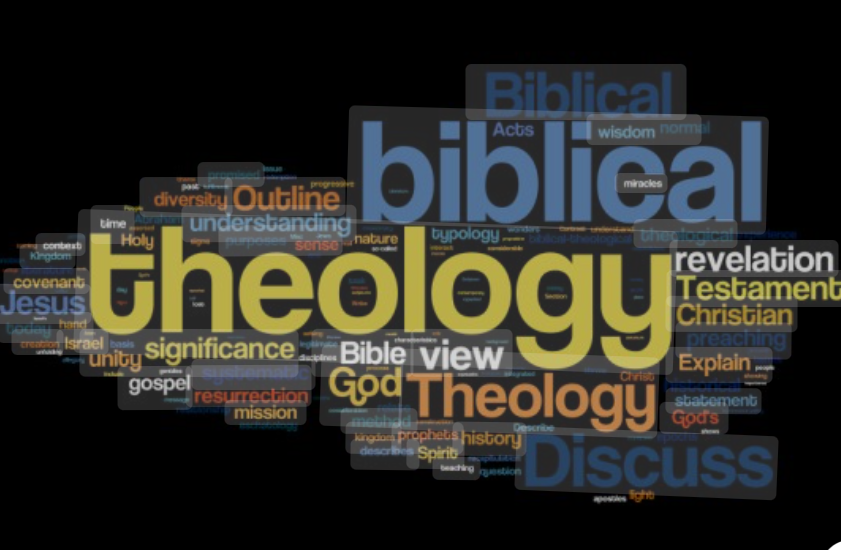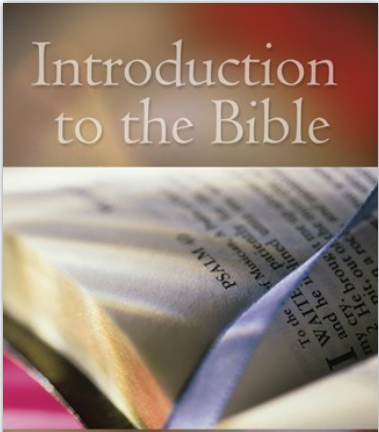INTRODUCTION TO GREEK
COURSE DESCRIPTION
This graduate-level course provides an in-depth introduction to Koine Greek, the language of the New Testament and early Christian writings. It is designed to develop a foundational competence in Greek grammar, syntax, and semantics while cultivating the skills necessary for exegetical analysis and hermeneutical application of biblical texts.
The course integrates linguistic study with theological reflection, emphasizing how nuances in Greek grammar affect the interpretation of key biblical passages.
Category SCHOOL OF MISSION & THEOLOGY
Last Updated 11/06/2025
2 Lesson
CONFLICT AND PEACE STUDIES
This course provides an advanced examination of the theories, dynamics, and practices of conflict and peacebuilding at local, regional, and international levels. It explores the philosophical, psychological, sociological, and theological dimensions of conflict, while emphasizing analytical and practical approaches to resolution and transformation. Students engage with advanced case studies, policy frameworks, and peacebuilding models to develop competence in managing and transforming conflicts within complex socio-political and faith-based contexts.
Category SCHOOL OF MISSION & THEOLOGY
Last Updated 11/06/2025
2 Lesson
CONTEMPORARY LEADERSHIP MANAGEMENT
COURSE DESCRIPTION
This course explores modern concepts, theories, and practices in leadership and management within contemporary organizational contexts. It emphasizes the integration of ethical principles, strategic decision-making, innovation, and emotional intelligence in leadership. The course equips learners with practical skills to lead effectively in dynamic, multicultural, and technologically driven environments.
Category SCHOOL OF MISSION & THEOLOGY
Last Updated 11/06/2025
2 Lesson
MINISTERIAL ETHICS AND BUSINESS ETIQUETTE
COURSE DESCRIPTION
This course explores ethical and moral standards required in Christian ministry and professional conduct in business and leadership environments. It aims to develop integrity, accountability, and professionalism in ministers and leaders, focusing on how personal character, biblical ethics, and proper etiquette influence ministry effectiveness and organizational excellence.
Category SCHOOL OF MISSION & THEOLOGY
Last Updated 11/06/2025
2 Lesson
MARRIAGE AND FAMILY COUNSELING
Course Description
This course provides advanced training in the theory and practice of marriage and family counseling. It integrates psychological, sociological, and theological perspectives to equip students with professional and spiritual tools for helping couples and families navigate challenges, build healthy relationships, and foster emotional and spiritual growth.
Category SCHOOL OF MISSION & THEOLOGY
Last Updated 11/06/2025
1 Lesson
ECCLESIOLOGY - THE DOCTRINE OF THE CHURCH
Category SCHOOL OF MISSION & THEOLOGY
Last Updated 11/20/2025
3 Lesson
THE ESCHATOLOGY (The study of end Times)
Category SCHOOL OF MISSION & THEOLOGY
Last Updated 11/20/2025
3 Lesson
ENTERPRENUERSHIP FOR MINISTRY LEADERS (Diploma Course)
Course Outline & Units
Unit 1: Introduction to Entrepreneurship and Ministry
• Definition of entrepreneurship and its relevance to the ministry.
• Biblical foundations: stewardship, talent multiplication (Matthew 25:14–30).
• Differences and similarities between business entrepreneurship and ministry entrepreneurship.
Unit 2: The Entrepreneurial Mindset for Ministry Leaders
• Creativity, innovation, and vision casting.
• Identifying personal gifts and opportunities.
• Overcoming fear and risk-taking in faith-based initiatives.
Unit 3: Identifying Opportunities in Ministry Contexts
• Community needs assessment.
• Social entrepreneurship and ministry.
• Turning challenges into opportunities.
Unit 4: Business Planning for Ministry Projects
• Crafting a mission-driven business plan.
• Setting goals, objectives, and strategies.
• Budgeting and financial planning.
• Developing sustainable funding models.
Unit 5: Financial Stewardship and Resource Mobilization
• Principles of biblical stewardship in managing resources.
• Fundraising strategies (partnerships, grants, donors, events).
• Income-generating activities for ministries.
• Financial accountability and transparency.
Unit 6: Leadership and Team Building in Entrepreneurship
• Entrepreneurial leadership styles for ministry.
• Building and managing effective teams.
• Mentorship and succession planning.
Unit 7: Innovation, Technology, and Ministry
• Leveraging digital platforms for ministry and business.
• E-commerce, online giving, and digital marketing for churches.
• Media and technology as tools for outreach and growth.
Unit 8: Challenges and Ethics in Ministry Entrepreneurship
• Ethical dilemmas: balancing profit and purpose.
• Avoiding manipulation and prosperity abuse.
• Managing competition, criticism, and failure.
• Maintaining integrity and accountability.
Unit 9: Case Studies in Ministry Entrepreneurship
• Successful ministry-run schools, hospitals, and media houses.
• Bi-vocational pastors and tent-making models (Apostle Paul as example).
• Global and local examples of impactful ministry entrepreneurs.
Unit 10: Why a Minister of the Gospel Should Become an Entrepreneur
• The Biblical Foundation: Kingdom Work Beyond the Pulpit
• Jesus & Fishermen
• Joseph's Business Wisdom
• Complementary Realms
Unit 11: Spiritual Intelligence + Business Intelligence = Kingdom Impact
• Spiritual Intelligence
• Business Intelligence
• Multiplied Influence
Unit 12: Real Story: Pastor How's Journey from Pulpit to Business
• Divine Redirection
• Miraculous Turnaround
• Kingdom Multiplication
Unit 13: Entrepreneurship as Stewardship and Mission
• The Lord God took the man, and put him in the garden of Eden to work it and keep it. - Genesis 2:15.
• Commit your work to the Lord, and your plans will be established." Proverbs 16:3
Unit 14: Marketplace Ministry: Business as a Mission Field
• Building Trust
• Christ's Love in Action
• Global Impact
Unit 15: Distinctives of Christian Entrepreneurship
• Biblical Ethics
• Purpose Beyond Profit
• Dependence on God's Wisdom
Unit 16: Overcoming Challenges: Avoiding Idolatry of Success
• The Warning
• Regular Heart Checks
• Accountability Structures
• Generosity Practices
Unit 16: The Transformational Potential: Multiplying Kingdom Influence.
• Greater Reach
• Sustainable Impact
• Holistic Witness
• Job Creation
• Ministry Resources
• Living Example
Unit 17: Call to Action: Embrace the Entrepreneurial Calling
• Equip Yourself
• Embrace the Mandate
• Step Boldly Forward
Learning Methods
Lectures & discussions
Group projects
Case studies
Assessment
Class participation and discussions: 10%
Assignment: 20%
Final exam: 70%
Category SCHOOL OF MISSION & THEOLOGY
Last Updated 11/08/2025
2 Lesson
BAMT-105 PRACTICAL MINISTRY AND COMMUNITY OUTREACH
COURSE DESCRIPTION:
This course is designed to equip students with practical ministry skills and a deeper understanding of community outreach as an expression of the gospel in action. It integrates biblical teaching, practical service, and community engagement. Students will participate in hands-on ministry experiences and projects aimed at meeting the spiritual, social, and physical needs of communities while demonstrating the love and mission of Christ.
Category SCHOOL OF MISSION & THEOLOGY
Last Updated 10/31/2025
1 Lesson
BAMT-103 PRINCIPLE OF CHURCH ADMINISTRATION
COURSE DESCRIPTION:
This course provides a biblical, theological, and practical understanding of the administration and management of the Church. It equips students with the principles, skills, and ethics needed for effective leadership, organization, planning, and stewardship within a church setting. Emphasis is placed on the integration of spiritual leadership with sound administrative practice to achieve the church’s mission and vision.
Category SCHOOL OF MISSION & THEOLOGY
Last Updated 10/31/2025
1 Lesson
BAMT-THEOLOGICAL FOUNDATION OF MISSION
COURSE DESCRIPTION:
This course explores the biblical, historical, and theological basis of Christian mission. It examines God’s redemptive purpose throughout Scripture, the role of the Church in mission, and the theological principles that undergird missionary work. The course aims to equip students with a solid theological understanding of mission as central to the nature of God and the life of the Church.
Category SCHOOL OF MISSION & THEOLOGY
Last Updated 10/31/2025
BAMT-104 INTRODUCTION TO THE KENYAN CONSTITUTION AND CHURCH LAW
COURSE DESCRIPTION:
This course introduces students to the Constitution of Kenya (2010) and its relevance to church governance, freedom of religion, and moral responsibility in society. It explores how constitutional principles shape church operations, religious rights, leadership accountability, property ownership, and conflict resolution within Christian institutions.
Category SCHOOL OF MISSION & THEOLOGY
Last Updated 10/30/2025
4 Lesson
BAMT-101 INTRODUCTION TO BIBLICAL STUDIES
Course Description:
This course introduces students to the academic study of the Bible, providing foundational knowledge of its origin, structure, content, interpretation, and theological significance. It explores both the Old and New Testaments, emphasizing historical context, literary forms, canonical development, and methods of biblical interpretation. Students will develop critical thinking and analytical skills for understanding and applying biblical truths in ministry, theology, and daily Christian life.
Category SCHOOL OF MISSION & THEOLOGY
Last Updated 10/30/2025
4 Lesson
THE ROLE OF THE CHURCH FOR NATIONAL DEVELOPMENT
Course Outline & Units
Unit 1: Introduction to Church and National Development
Meaning of development: economic, social, moral, and spiritual dimensions.
Theological foundation of the Church’s mission in society.
The Church as salt and light (Matthew 5:13-16).
Unit 2: Historical Role of the Church in Nation-Building
Early church contributions to education and healthcare.
Missionary impact on literacy, agriculture, and civilization.
The Church’s role in Africa’s independence movements.
Unit 3: The Church and Governance
Biblical principles on leadership and governance.
Church involvement in policy advocacy.
Relationship between the Church and the State.
Prophetic voice: speaking truth to power.
Unit 4: The Church and Social Development
Role in education and literacy.
Church initiatives in healthcare and community services.
Poverty alleviation and economic empowerment.
Promoting peace, justice, and reconciliation.
Unit 5: The Church and Moral Development
Shaping national values and ethics.
Addressing corruption, immorality, and social ills.
Building integrity and accountability in public service.
Unit 6: Contemporary Challenges Facing the Church
Secularism and liberal ideologies. Mismanagement of church resources.
Political manipulation of the Church.
Interfaith conflicts and religious extremism
.
Unit 7: Strategies for Effective Church Involvement in National Development
Partnerships with government and civil society.
Empowering the youth and women.
Sustainable development through community projects.
Training leaders for transformation.
Unit 8: Case Studies
The Church in Kenya’s development agenda.
The role of the Church in South Africa during and after apartheid.
The Catholic Church’s global influence in education and health.
Pentecostal and Evangelical movements in community transformation.
Learning Methods
Lectures & discussions
Group projects
Case studies
Assessment
Class participation and discussions: 10%
Group presentation: 20%
Final exam: 70%
Category SCHOOL OF MISSION & THEOLOGY
Last Updated 11/08/2025
3 Lesson
The Role of the Church in National Development
Course Outline & Units
Unit 1: Introduction to Church and National Development
Meaning of development: economic, social, moral, and spiritual dimensions.
Theological foundation of the Church’s mission in society.
The Church as salt and light (Matthew 5:13-16).
Unit 2: Historical Role of the Church in Nation-Building
Early church contributions to education and healthcare.
Missionary impact on literacy, agriculture, and civilization.
The Church’s role in Africa’s independence movements.
Unit 3: The Church and Governance
Biblical principles on leadership and governance.
Church involvement in policy advocacy.
Relationship between the Church and the State.
Prophetic voice: speaking truth to power.
Unit 4: The Church and Social Development
Role in education and literacy.
Church initiatives in healthcare and community services.
Poverty alleviation and economic empowerment.
Promoting peace, justice, and reconciliation.
Unit 5: The Church and Moral Development
Shaping national values and ethics.
Addressing corruption, immorality, and social ills.
Building integrity and accountability in public service.
Unit 6: Contemporary Challenges Facing the Church
Secularism and liberal ideologies. Mismanagement of church resources.
Political manipulation of the Church.
Interfaith conflicts and religious extremism
.
Unit 7: Strategies for Effective Church Involvement in National Development
Partnerships with government and civil society.
Empowering the youth and women.
Sustainable development through community projects.
Training leaders for transformation.
Unit 8: Case Studies
The Church in Kenya’s development agenda.
The role of the Church in South Africa during and after apartheid.
The Catholic Church’s global influence in education and health.
Pentecostal and Evangelical movements in community transformation.
Learning Methods
Lectures & discussions
Group projects
Case studies
Assessment
Class participation and discussions: 10%
Group presentation: 20%
Final exam: 70%
Category SCHOOL OF MISSION & THEOLOGY
Last Updated 11/08/2025
3 Lesson
ENTERPRENUERSHIP FOR MINISTRY LEADERS
Category SCHOOL OF MISSION & THEOLOGY
Last Updated 11/08/2025
2 Lesson
SOTERIOLOGY(The Doctrine of Salvation)
Category SCHOOL OF MISSION & THEOLOGY
Last Updated 11/08/2025
2 Lesson
DMT-101 INTRODUCTION TO BIBLICAL STUDIES
Course Description
This course provides a foundational understanding of the Bible as the inspired Word of God. It introduces students to the nature, structure, origin, composition, interpretation, and authority of the Scriptures. Students will explore the historical and cultural background of the Old and New Testaments, the process of canonization, principles of biblical interpretation (hermeneutics), and the relevance of the Bible in contemporary Christian life and ministry.
Course Objectives
By the end of the course, students should be able to:
-
Understand the origin, nature, and authority of the Bible.
-
Identify and describe the structure, divisions, and main themes of the Old and New Testaments.
-
Explain the historical, cultural, and geographical backgrounds of biblical writings.
-
Appreciate the process of canonization and preservation of the biblical text.
-
Apply sound principles of interpretation to various biblical texts.
-
Demonstrate the relevance of the Bible to personal faith and ministry.
Course Learning Outcomes
Upon completion, students will be able to:
-
Distinguish between different literary genres in the Bible.
-
Trace the historical development of the biblical canon.
-
Interpret biblical passages contextually and responsibly.
-
Relate biblical teachings to contemporary Christian life and ethics.
-
Defend the reliability and inspiration of Scripture.
Course Outline (Unit Breakdown)
Unit 1: Introduction to the Bible
-
Meaning and definition of “Bible” and “Scripture”
-
Overview of the Old and New Testaments
-
Importance and uniqueness of the Bible in Christianity
-
Major divisions of the Bible and their purposes
-
The Bible as the Word of God (Inspiration and Authority)
Unit 2: Origin and Development of the Bible
-
The divine and human aspects of Scripture
-
Historical background of biblical revelation
-
The process of writing, transmission, and translation
-
Oral traditions and written documents
-
Canonization: Old and New Testament canons
Unit 3: Structure and Content of the Old Testament
-
The Pentateuch (Law): Genesis to Deuteronomy
-
Historical Books: Joshua to Esther
-
Poetic and Wisdom Books: Job to Song of Solomon
-
Prophetic Books: Major and Minor Prophets
-
Central themes: Creation, Covenant, Law, and Prophecy
Unit 4: Structure and Content of the New Testament
-
The Gospels and their portraits of Jesus
-
Acts of the Apostles: The birth and growth of the Church
-
Pauline Epistles: Theology and Christian living
-
General Epistles: Faith and endurance
-
Revelation: Apocalyptic vision and eschatology
Unit 5: Historical and Cultural Backgrounds
-
The ancient Near Eastern world of the Old Testament
-
Intertestamental period (400 silent years)
-
The Greco-Roman world of the New Testament
-
Geography of biblical lands (Israel, Egypt, Mesopotamia)
-
Jewish culture, religion, and politics in biblical times
Unit 6: The Inspiration, Authority, and Inerrancy of Scripture
-
Theories of inspiration (verbal, dynamic, plenary, etc.)
-
The authority of Scripture in doctrine and life
-
The infallibility and trustworthiness of the Bible
-
The role of the Holy Spirit in understanding Scripture
Unit 7: Principles of Biblical Interpretation (Hermeneutics)
-
Meaning and necessity of interpretation
-
Historical-grammatical method
-
Contextual and theological interpretation
-
Common interpretive errors and how to avoid them
-
Application of biblical truth in modern life
Unit 8: The Bible and Modern Translations
-
History of Bible translation (Septuagint to modern versions)
-
Major English translations and their characteristics
-
The importance of language and context in translation
-
Use of study Bibles, concordances, and commentaries
Unit 9: The Unity and Message of the Bible
-
Central themes: Redemption, Covenant, Kingdom of God, and Salvation
-
Typology and prophecy fulfillment in Christ
-
The progressive revelation of God’s plan
-
The relationship between the Old and New Testaments
Unit 10: The Relevance of the Bible Today
-
The Bible in personal devotion and discipleship
-
The Bible as a guide in moral and ethical decision-making
-
The Bible and social transformation
-
Biblical worldview and contemporary issues
Teaching and Learning Methods
-
Lectures and class discussions
-
Group presentations and projects
-
Scripture reading and reflection journals
-
Case studies and contextual analysis
-
Audio-visual and online resources
Assessment Methods
-
Class participation: 10%
-
Quizzes and assignments: 20%
-
Mid-semester exam: 30%
-
Final exam/project: 40%
Category SCHOOL OF MISSION & THEOLOGY
Last Updated 10/18/2025
1 Lesson
















